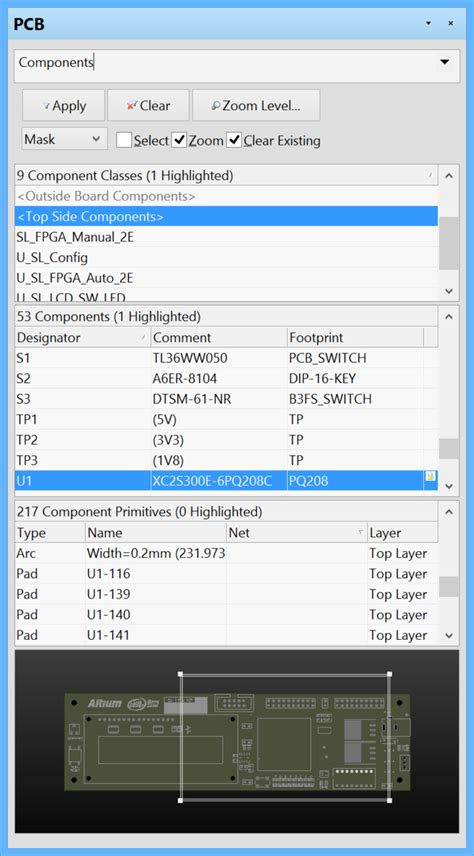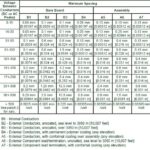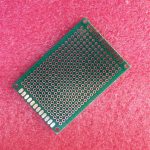Introduction to PCB documentation
Printed Circuit Board (PCB) documentation is a crucial aspect of the PCB manufacturing process. It ensures that all the necessary information is available for the fabrication, assembly, and testing of the PCB. Proper documentation helps to minimize errors, reduce costs, and improve the overall quality of the final product.
In this article, we will discuss the various files and documents required for bare boards, PCB assembly, and documentation. We will also provide a comprehensive guide on how to create and maintain these documents effectively.
Types of PCB Documentation
There are several types of PCB documentation, each serving a specific purpose. Here are the main categories:
- Design Documentation: This includes schematic diagrams, PCB layout files, and bill of materials (BOM).
- Fabrication Documentation: This includes Gerber files, drill files, and fabrication drawings.
- Assembly Documentation: This includes assembly drawings, pick and place files, and test procedures.
- Quality Documentation: This includes inspection reports, test reports, and certificates of compliance.
Let’s explore each category in more detail.
Design Documentation
Schematic Diagrams
Schematic diagrams are the foundation of PCB design. They show the electrical connections between components and provide a visual representation of the circuit. Schematic diagrams should include the following information:
- Component symbols and values
- Reference designators
- Power and ground connections
- Signal names and net labels
- Revision history and date
It is essential to keep schematic diagrams up to date and well-organized. Use a consistent naming convention and follow industry standards, such as IEEE 315 or ANSI Y32.2.
PCB Layout Files
PCB layout files contain the physical design of the PCB, including the placement of components, routing of traces, and the creation of copper polygons. The most common PCB layout file formats are:
- Gerber files (RS-274X)
- ODB++ (Open Database++)
- IPC-2581 (Generic Requirements for Printed Board Assembly Products Manufacturing Description Data and Transfer Methodology)
When creating PCB layout files, consider the following factors:
- Board size and shape
- Layer stackup and thickness
- Component footprints and land patterns
- Routing constraints and design rules
- Manufacturing capabilities and limitations
Bill of Materials (BOM)
The bill of materials (BOM) is a list of all the components required to assemble the PCB. It should include the following information for each component:
- Reference designator
- Manufacturer part number
- Description
- Quantity
- Supplier information
Create a separate BOM for each PCB version and revision. Use a consistent format, such as CSV or Excel, and include the BOM in the design documentation package.
Fabrication Documentation
Gerber Files
Gerber files are the industry standard for PCB fabrication. They contain the information needed to manufacture the PCB, including:
- Copper layers
- Solder mask and silkscreen
- Drill and route data
- Aperture lists and tool sizes
When generating Gerber files, follow these guidelines:
- Use the latest Gerber format (RS-274X)
- Include all necessary layers and files
- Verify the accuracy of the data
- Provide a readme file with instructions and notes
Drill Files
Drill files contain the information needed to drill holes in the PCB. They specify the location, size, and type of each hole. The most common drill file formats are:
- Excellon
- Sieb & Meyer
Include the drill files in the fabrication documentation package, along with the Gerber files and fabrication drawings.
Fabrication Drawings
Fabrication drawings provide additional information not included in the Gerber files, such as:
- Board outline and dimensions
- Layer stackup and material specifications
- Special requirements and notes
- Revision history and date
Create fabrication drawings using a standard format, such as PDF or DXF. Include them in the fabrication documentation package, along with the Gerber and drill files.
Assembly Documentation
Assembly Drawings
Assembly drawings provide instructions for assembling the PCB, including:
- Component placement and orientation
- Solder paste and adhesive application
- Special handling and assembly requirements
- Revision history and date
Create assembly drawings using a standard format, such as PDF or DXF. Include them in the assembly documentation package, along with the pick and place files and test procedures.
Pick and Place Files
Pick and place files contain the information needed to automate the placement of components on the PCB. They specify the location, orientation, and type of each component. The most common pick and place file formats are:
- CSV (Comma Separated Values)
- Gerber X2 (Component Placement List)
Include the pick and place files in the assembly documentation package, along with the assembly drawings and test procedures.
Test Procedures
Test procedures outline the steps required to verify the functionality and quality of the assembled PCB. They should include:
- Visual inspection criteria
- Electrical test parameters
- Functional test requirements
- Acceptance criteria
Create test procedures using a standard format, such as PDF or Word. Include them in the assembly documentation package, along with the assembly drawings and pick and place files.
Quality Documentation
Inspection Reports
Inspection reports document the results of visual and automated inspections performed during the PCB manufacturing process. They should include:
- Inspection criteria and methods
- Defect types and quantities
- Corrective actions and disposition
- Inspector name and date
Create inspection reports using a standard format, such as PDF or Excel. Include them in the quality documentation package, along with the test reports and certificates of compliance.
Test Reports
Test reports document the results of electrical and functional tests performed on the assembled PCB. They should include:
- Test parameters and conditions
- Measured values and tolerances
- Pass/fail criteria and results
- Tester name and date
Create test reports using a standard format, such as PDF or Excel. Include them in the quality documentation package, along with the inspection reports and certificates of compliance.
Certificates of Compliance
Certificates of compliance (CoCs) certify that the PCB meets specified requirements, such as:
- Material composition and purity
- Environmental and safety standards
- Regulatory compliance (e.g., RoHS, REACH)
Obtain CoCs from the PCB fabricator and component suppliers. Include them in the quality documentation package, along with the inspection and test reports.
Best Practices for PCB Documentation
To ensure the effectiveness and efficiency of PCB documentation, follow these best practices:
- Use a version control system: Keep track of changes and revisions to the documentation using a version control system, such as Git or SVN.
- Follow industry standards: Adhere to industry standards and guidelines, such as IPC-2615 (PCB Documentation) and IPC-D-325 (Documentation Requirements for Printed Circuit Assemblies).
- Use templates and checklists: Create standardized templates and checklists for each type of document to ensure consistency and completeness.
- Collaborate with stakeholders: Involve all stakeholders, including design, manufacturing, and quality teams, in the documentation process to ensure accuracy and alignment.
- Automate documentation generation: Use software tools to automate the generation of documentation, such as schematic and PCB layout files, BOMs, and Gerber files.
- Perform regular audits: Conduct periodic audits of the documentation to identify gaps, errors, and opportunities for improvement.
By following these best practices, you can create and maintain high-quality PCB documentation that supports the entire manufacturing process.

PCB Documentation Tools
There are several software tools available to create and manage PCB documentation. Here are some of the most popular options:
| Tool | Description |
|---|---|
| Altium Designer | A comprehensive PCB design and documentation tool with integrated version control and data management. |
| Cadence OrCAD | A suite of PCB design and documentation tools, including schematic capture, PCB layout, and documentation generation. |
| KiCad | A free and open-source PCB design and documentation tool with schematic capture, PCB layout, and Gerber file generation. |
| EAGLE | A widely-used PCB design and documentation tool with schematic capture, PCB layout, and autorouting capabilities. |
| Zuken CR-8000 | A high-end PCB design and documentation tool with advanced features for complex and high-speed designs. |
Choose the tool that best fits your needs and budget, and invest in training to ensure that your team can use it effectively.
Frequently Asked Questions (FAQ)
- What are the most common PCB documentation errors?
- Incomplete or outdated BOMs
- Inconsistent or missing reference designators
- Incorrect or missing component footprints
- Inaccurate or incomplete Gerber files
-
Missing or outdated revision history
-
How often should PCB documentation be updated?
- Update PCB documentation whenever there are changes to the design, components, or manufacturing process.
-
Perform a comprehensive review and update of the documentation at least once per year.
-
What are the consequences of poor PCB documentation?
- Increased risk of manufacturing errors and delays
- Higher costs due to rework and scrap
- Reduced product quality and reliability
- Difficulty in troubleshooting and repair
-
Potential legal and regulatory compliance issues
-
How can I ensure the security of my PCB documentation?
- Use access controls and permissions to restrict access to sensitive information
- Encrypt documentation files during storage and transmission
- Implement a backup and disaster recovery plan
-
Regularly monitor and audit documentation access and changes
-
What are the benefits of using a version control system for PCB documentation?
- Enables collaboration and concurrent editing
- Provides a complete history of changes and revisions
- Allows for easy rollback and branching
- Facilitates documentation reuse and sharing
- Improves traceability and accountability
Conclusion
PCB documentation is a critical component of the PCB manufacturing process. It ensures that all the necessary information is available for the fabrication, assembly, and testing of the PCB. By creating and maintaining comprehensive and accurate documentation, you can reduce errors, improve quality, and streamline the manufacturing process.
To create effective PCB documentation, follow industry standards and best practices, use appropriate software tools, and involve all stakeholders in the process. Regularly review and update the documentation to ensure that it remains current and accurate.
By investing in high-quality PCB documentation, you can improve the efficiency, reliability, and profitability of your PCB manufacturing operations. So, make sure to prioritize documentation in your PCB design and manufacturing workflow.






Leave a Reply